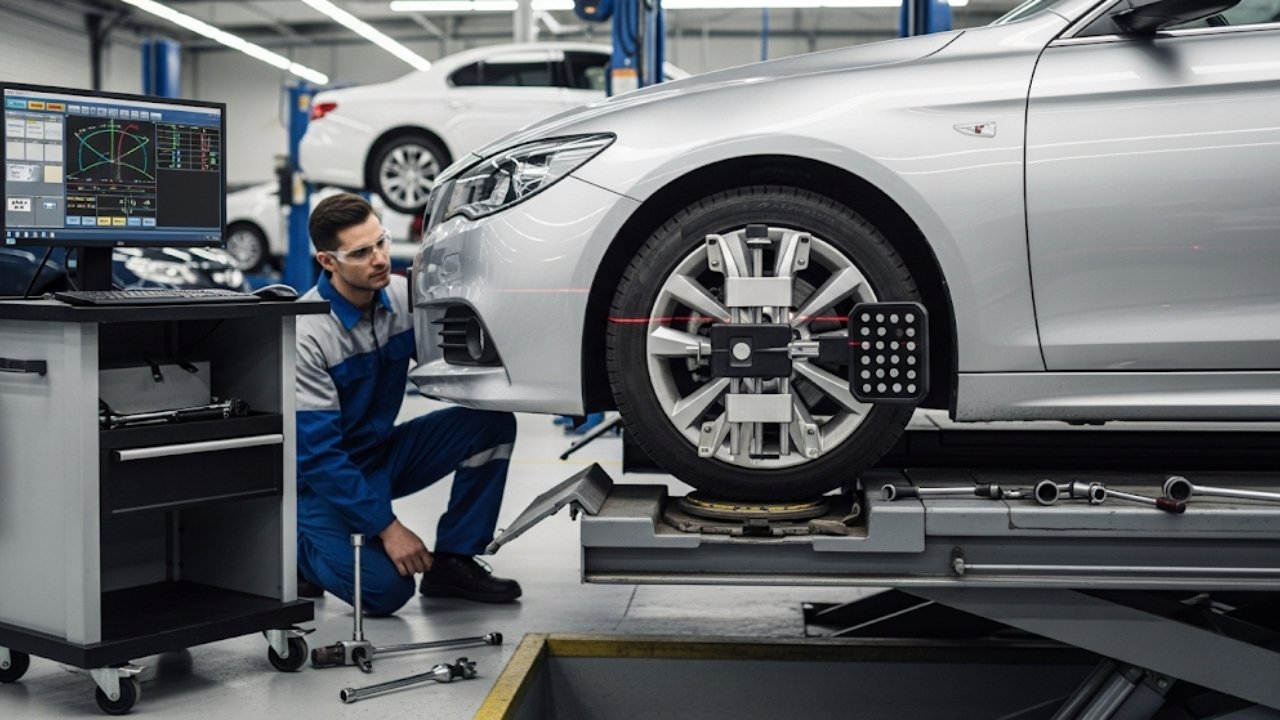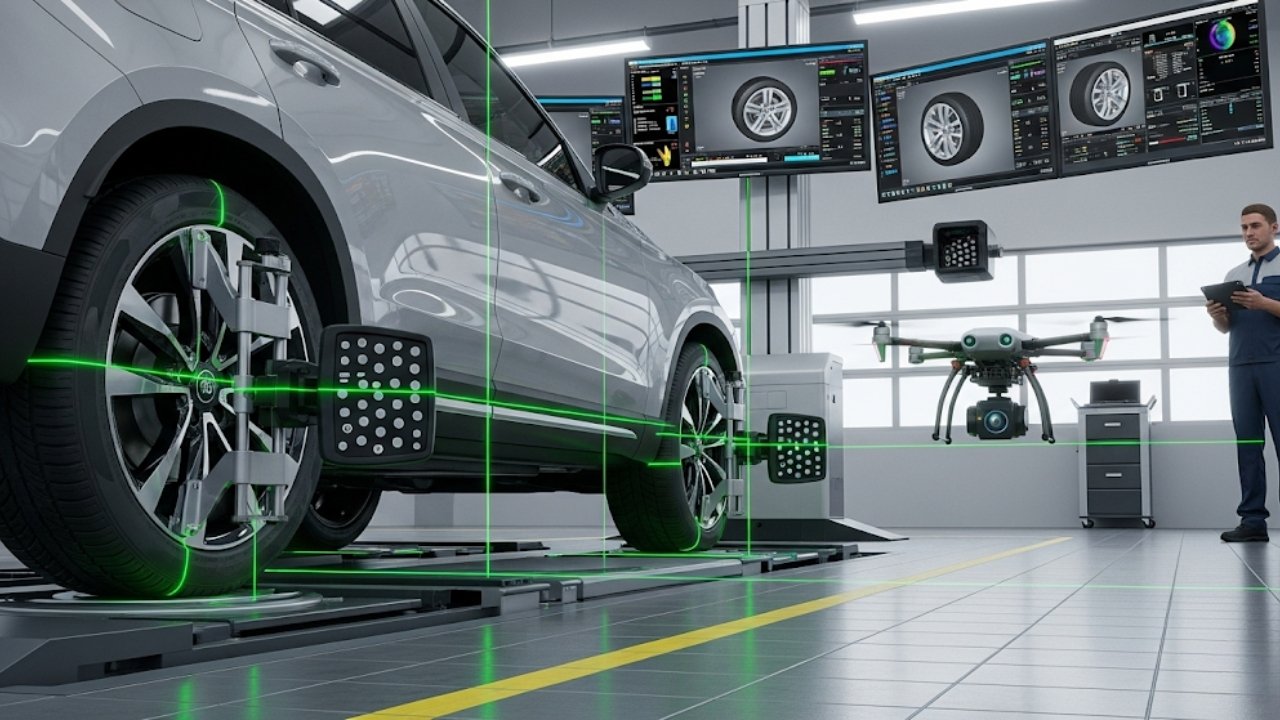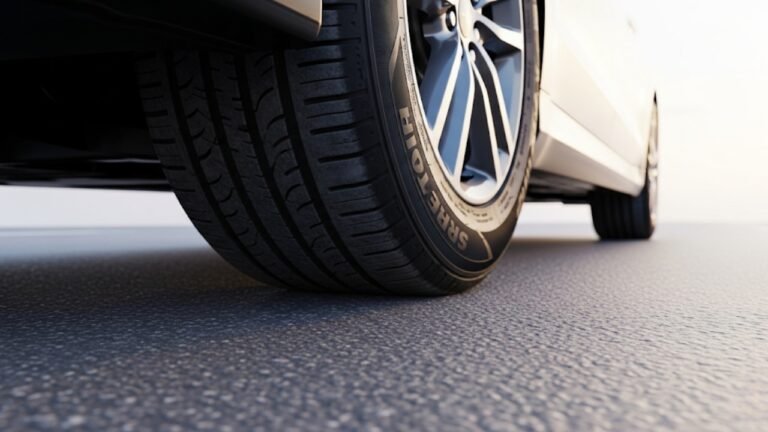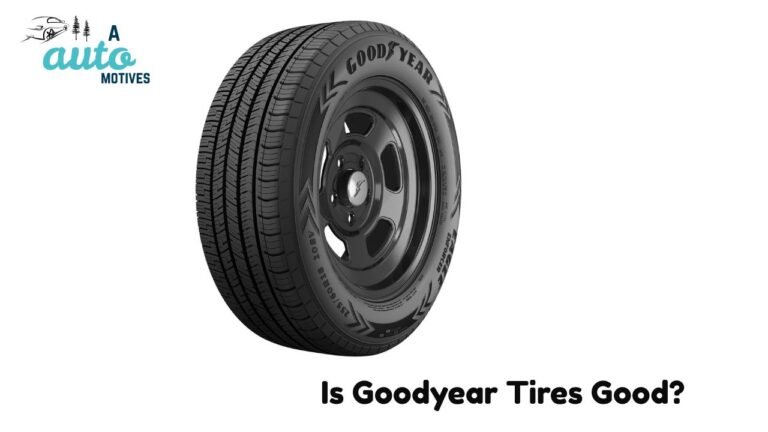How Long Does It Take to Do a Tire Alignment?

Have you ever let go of your steering wheel for just a second and watched your car drift slightly to the right or left like it’s got a mind of its own? Yep, I’ve been there. It’s one of those subtle warnings your car gives before things get worse. It usually means it’s time for a tire alignment.
But wait, you’re thinking, how long does it take to do a tire alignment? The short answer? Around 30 minutes to an hour. But as with most things car-related, there’s more to the story.
Whether you’re trying to squeeze it into your lunch break or planning your weekend errands, timing matters. And no one wants to sit in a waiting room watching reruns with stale coffee in hand. So, let’s dig deeper and break down the real-world timeline of this process.
What Exactly Is a Tire Alignment? It’s Not What Most Think

Alignment adjusts the angles of your wheels so that they sit properly with the ground. These angles are known as:
-
Camber – the inward or outward tilt of the wheel
-
Caster – the angle of your steering pivot
-
Toe – whether your tires turn inward or outward when viewed from above
When these are off, you end up with uneven tire wear, poor handling, and sometimes, a steering wheel that’s constantly pulling you like a rebellious toddler.
So why should you care?
Because proper alignment:
-
Improves fuel efficiency
-
Extends tire life
-
Enhances driving comfort
-
Prevents future expensive repairs
And yeah, I learned that the hard way. Ignored an alignment issue once, and two tires were bald by 10,000 miles. Painful lesson.
So, How Long Does It Take to Do a Tire Alignment in Real Life?
Let’s circle back to the heart of the question: how long does it take to do a tire alignment?
Generally, it takes 30 to 60 minutes to perform a standard alignment. But—and this is a big but—it depends on several factors.
Here’s a breakdown in a handy table:
| Factor | Time Impact | Details |
|---|---|---|
| Standard 2-wheel alignment | ~30 minutes | For front-wheel-drive vehicles |
| Full 4-wheel alignment | 45–60 minutes | Required for most all-wheel-drive and 4WD cars |
| Vehicle condition | +15–30 minutes | Rusted bolts or worn parts can slow things down |
| Technician experience | Faster with experts | Experienced shops often finish faster and with better results |
| Equipment used | Faster with modern tools | Laser alignment machines save a lot of time |
| Additional repairs (if needed) | Add hours | Suspension or steering part replacement takes extra time |
Let me put it into perspective.
Last summer, I took my SUV in for an alignment before a road trip. I expected to be in and out in 45 minutes. But guess what? The technician found a worn-out control arm bushing. What should’ve been a quick job turned into a 2-hour stay. I didn’t mind, though—better safe than stranded.
Moral of the story? Plan for at least an hour, but allow some wiggle room in case your vehicle has a surprise or two.
Types of Tire Alignments and How They Affect the Time
Not all alignments are created equal. Depending on your car type and alignment needs, the time it takes can vary. Here’s what you should know:
1. Two-Wheel Alignment
Also called front-end alignment, this is usually quicker and cheaper.
-
Best for: Most front-wheel-drive cars
-
Time: About 30 minutes
-
Process: Adjusts only the front two wheels
2. Four-Wheel Alignment
This is more comprehensive.
-
Best for: All-wheel-drive or rear-wheel-drive vehicles
-
Time: Up to 60 minutes
-
Process: Adjusts all four wheels and angles
Think of it like a basic tune-up vs. a full car service. More wheels = more checks = more time.
And if your car’s ever been in a fender-bender? Go with a four-wheel alignment. Trust me. You want every angle checked.
How Often Should You Get a Tire Alignment?
Here’s a golden rule I go by—every 6,000 to 10,000 miles, or about twice a year. Some people do it every time they rotate tires. It’s smart and saves cash in the long run.
But timing can depend on driving conditions too. For instance:
-
Hit a pothole? Get an alignment check.
-
Curb your wheels while parallel parking? Better safe than sorry.
-
Just bought new tires? Align them before they start wearing unevenly.
Bullet points to remember:
-
Get an alignment every 6 months or 6,000 miles.
-
After installing new tires.
-
After hitting potholes or curbs.
-
If you notice your car pulling to one side.
It’s a bit like dental checkups—ignore them too long, and the problems multiply.
Signs You Might Need an Alignment—Don’t Ignore These
Sometimes your car whispers; sometimes it screams. Here are the common signs your alignment might be off:
-
Car pulling to one side
-
Steering wheel not centered
-
Uneven tire wear
-
Vibrations while driving
-
Squealing tires on turns
I once had a car that felt fine, but my mechanic pointed out the outer tread on the tires was nearly bald. I hadn’t even noticed because the ride was smooth. After a quick alignment and rotation, I doubled the lifespan of those tires.
Lesson learned—always keep an eye on wear patterns.
What Can Make a Tire Alignment Take Longer Than Expected?
So you planned for 30–60 minutes… but an hour and a half later, you’re still at the shop. What gives? Let’s talk about the hidden culprits that can stretch out your visit like a slow-moving queue at the DMV.
1. Worn or Damaged Suspension Components
Your wheels can’t be aligned properly if your suspension isn’t up to snuff. If the technician finds worn tie rods, ball joints, or control arm bushings, those have to be replaced first. That alone can add 1 to 3 hours depending on how deep the rabbit hole goes.
2. Rusty or Seized Bolts
Live somewhere snowy or coastal? Salt and moisture might’ve corroded your alignment bolts. These can be a nightmare to remove. I’ve seen shops spend 30+ minutes just trying to unfreeze one stubborn bolt.
3. Aftermarket Modifications
If your car has been lowered, lifted, or otherwise modified, a standard alignment won’t cut it. Specialized adjustments or even custom camber kits may be needed, adding extra setup time.
4. Vehicle Make and Model
Some cars are just trickier. High-end German vehicles like BMWs and Audis often have more complex suspension systems that need extra care. You’re looking at 60–90 minutes minimum.
Tips to Speed Up the Tire Alignment Process
Want to be in and out faster than your favorite drive-thru? Here’s how you can help the tech help you:
-
Make an appointment. Walk-ins can wait longer, even if the job is short.
-
Clean your undercarriage. Dirt and mud can slow down inspection and adjustment.
-
Mention any suspension work recently done. This helps the tech know what to look out for.
-
Choose a modern shop with laser alignment machines. Old-school setups take more time.
-
Avoid peak hours. Saturday mornings and weekday evenings are the busiest.
Once, I dropped in on a Wednesday morning—no crowd, got coffee, and was out in 35 minutes. Planning makes all the difference.
Tire Alignment Cost vs. Time Trade-Off
Let’s be real. Sometimes, cheaper isn’t better. Alignment services can cost $75 to $200, depending on the type (2-wheel vs 4-wheel), your location, and your car. But going for the lowest price might mean:
-
Longer wait times
-
Outdated equipment
-
Less accurate results
Meanwhile, paying a bit more at a certified shop usually means:
-
Faster service
-
Better accuracy
-
Peace of mind
Quick Tip:
If you drive frequently or rack up high mileage, consider lifetime alignment packages from chains like Firestone or Pep Boys. Pay once, realign as needed. I’ve saved hundreds this way.
Real-Life Stories: Because Experience Matters
Let’s put this into real-world perspective.
Story 1: The Commuter Crunch
A friend of mine, Arif, drives 50 km daily. He noticed his steering wheel shaking and tires wearing oddly. He booked a morning alignment. Thirty minutes in, the shop called—his tie rod ends were shot. Total time spent? 2.5 hours. But afterward, his ride was buttery smooth.
Story 2: The Weekend Warrior
Sarah, a weekend road tripper, hit a pothole the size of Dhaka’s traffic jam. Her steering felt off. She went in for a four-wheel alignment and was out in 45 minutes. No worn parts, no surprises. Just routine maintenance done right.
Moral? Every car tells a different story.
Frequently Asked Questions (FAQs)
1. Can I drive with bad alignment?
Yes, but you shouldn’t. Misalignment leads to faster tire wear, poor fuel economy, and unsafe handling—especially at high speeds or during emergency stops.
2. Do I need an alignment after getting new tires?
Absolutely. If you don’t, your brand-new tires can wear unevenly and lose their value quickly. Alignment ensures you get the full lifespan out of your investment.
3. How long does a tire alignment last?
Typically, alignment holds for 6,000 to 10,000 miles, but poor roads or rough driving can throw it off earlier.
4. Is tire alignment the same as tire balancing?
Nope! Balancing corrects weight distribution in the tire/wheel assembly. Alignment corrects the wheel angles to ensure your car drives straight.
5. Can tire alignment fix vibration?
Only sometimes. If vibration comes from tire wear caused by misalignment, yes. But if it’s from unbalanced tires, bent rims, or bad suspension, alignment won’t help much.
6. How do I know if my alignment was done right?
Your steering wheel should be centered, the car should drive straight, and you shouldn’t notice any pulling or vibration. Ask for a before-and-after alignment printout if you’re unsure.
7. What’s the difference between a computerized and manual alignment?
Computerized alignment uses laser-guided precision and is faster and more accurate. Manual setups are older and more prone to human error.
The Takeaway: How Long Does It Take to Do a Tire Alignment?
So, to wrap it all up: how long does it take to do a tire alignment?
-
Standard 2-wheel alignment: ~30 minutes
-
Full 4-wheel alignment: ~45–60 minutes
-
With worn parts or rust: Add 1–2 hours
-
With aftermarket mods: Can vary widely
But don’t treat it like a chore. Treat it like a favor to your car—and your wallet. A quick alignment can prevent costly tire replacements, save fuel, and make your drive smoother.
If you plan ahead, choose the right shop, and stay alert for signs of misalignment, you’ll rarely be caught off-guard. After all, your car deserves to roll straight—so your life doesn’t go sideways.





